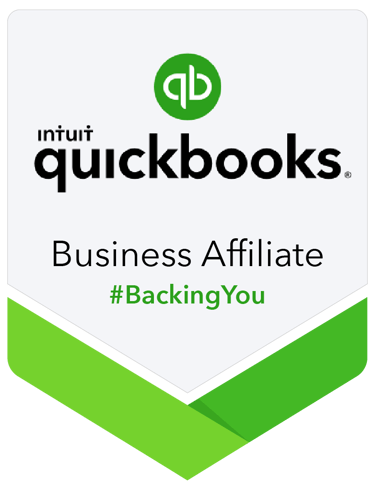IOLTA Trust Account Management Guide | Avoid Compliance Mistakes
Learn how to manage IOLTA trust accounts, track retainers, and stay compliant with this step-by-step guide for small business owners and professionals handling client funds.
ATTORNEY
Jerry Blanco
10/2/20257 min read


A Simple Guide to Managing Trust Accounts Without the Headaches (Even If You're Not a Lawyer)
If you're a professional who handles client money—whether you're an attorney, real estate agent, mediator, or another service provider—you've probably heard the term "IOLTA" thrown around. Maybe you nodded along while secretly wondering what it actually means and why it matters so much.
Here's the truth: IOLTA accounts aren't just banking paperwork. They're a legal requirement designed to protect your clients' money, and mismanaging them can lead to serious consequences—including disciplinary action, fines, or even losing your license.
The good news? Managing an IOLTA account doesn't have to be complicated. Think of it like keeping your business checking account and your personal account separate—it's about boundaries, organization, and following a few key rules. In this guide, I'll walk you through everything you need to know to manage trust accounts confidently and stay on the right side of compliance.
What Exactly Is an IOLTA Account?
Let's start with the basics. IOLTA stands for "Interest on Lawyers Trust Accounts," but don't let the name fool you—these accounts aren't just for lawyers anymore. Various professionals use trust accounts to hold client funds temporarily.
Here's the simple explanation: An IOLTA account is a special bank account where you deposit money that belongs to your clients but passes through your hands. Think of it as a secure holding area. For example:
Attorneys deposit retainer fees before earning them
Real estate professionals hold earnest money deposits
Mediators may hold settlement funds temporarily
Property managers hold tenant security deposits
The key feature? Any interest earned on these pooled small amounts goes to a state foundation that funds legal aid programs and other public services—not to you or your clients. This is how states turn tiny bits of interest into meaningful community support.
Why IOLTA Compliance Matters (More Than You Think)
You might be thinking, "It's just a bank account, right?" Not quite. IOLTA accounts are heavily regulated because they contain other people's money. State bar associations and regulatory bodies take trust account violations very seriously.
Common violations include:
Commingling funds (mixing client money with your business or personal funds)
Misappropriation (using client funds before you've earned them)
Poor recordkeeping (not tracking every penny in and out)
Failed reconciliations (not regularly matching your records to bank statements)
Even honest mistakes can trigger investigations, audits, and professional consequences. The silver lining? Most IOLTA problems stem from disorganization, not dishonesty. That means you can avoid them with the right systems.
Step-by-Step: Setting Up Your IOLTA Account the Right Way
Step 1: Open Your Account with a Compliant Bank
Not every bank offers IOLTA accounts, and not every account qualifies. Contact your state bar association or regulatory body first to get their list of approved financial institutions.
What to do:
Call 2-3 banks from the approved list
Ask specifically for an "IOLTA" or "trust account"
Confirm they'll report interest to your state's IOLTA program
Bring your professional license, business documentation, and tax ID when opening
Pro tip: Keep your IOLTA account at a different bank than your business operating account. This physical separation makes it harder to accidentally mix funds.
Step 2: Never, Ever Commingle Funds
This is the golden rule: Client money stays separate from your money. Period.
Think of your IOLTA account like a coat check at a restaurant. You're holding customers' coats (their money) temporarily. You wouldn't take someone's coat home or mix it with the restaurant's lost-and-found, right? Same principle.
What belongs in your IOLTA:
Unearned retainer fees
Settlement funds you're holding
Client deposits before services are rendered
Any money that's still legally the client's
What does NOT belong in your IOLTA:
Your earned fees (transfer these to your business account once earned)
Business operating expenses
Your personal money (not even "temporarily")
Managing Retainers: From Deposit to Earned Income
Retainers are where many business owners get tripped up. Here's how to handle them correctly:
When You Receive a Retainer
Step 1: Deposit the full amount into your IOLTA account—not your business account.
Step 2: Record the deposit immediately in your trust account ledger. Write down:
Date received
Client name
Amount
Check number or payment method
What the retainer covers
Step 3: Send the client a receipt acknowledging that you've received and deposited their funds into your trust account.
As You Earn the Retainer
Each time you complete work that's covered by the retainer:
Step 1: Create an invoice showing the work completed and the amount earned.
Step 2: Transfer only the earned portion from your IOLTA to your business operating account.
Step 3: Update your trust ledger showing the withdrawal and the new balance for that client.
Step 4: Send the client a statement showing what you earned, what you withdrew, and what remains in trust.
Example: You receive a $3,000 retainer from Client A. You deposit all $3,000 into your IOLTA. After completing Phase 1 of the project worth $1,200, you invoice the client, transfer $1,200 to your business account, and note that $1,800 remains in trust for Client A.
The Trust Account Ledger: Your Best Friend
Your trust ledger is a detailed record showing every transaction for every client. Think of it as your IOLTA account's diary—it tells the complete story of each client's money.
What to Track
For every deposit and withdrawal, record:
Transaction date
Client name/matter
Description of the transaction
Deposit amount (if applicable)
Withdrawal amount (if applicable)
Balance remaining for that specific client
Critical point: You need to track balances by client, not just an overall account balance. You must know exactly how much of the total IOLTA balance belongs to each client at any moment.
Choose Your System
You have options:
Manual ledger: A physical book or spreadsheet where you record entries by hand. This works for businesses with very few trust transactions (1-5 per month).
Spreadsheet: Create columns for all the data points above. This works if you're comfortable with formulas and have moderate transaction volume (5-20 per month).
Trust accounting software: Programs like QuickBooks with trust accounting features, Clio Manage, or specialized trust account software. This is ideal if you have higher volume (20+ per month) or multiple clients with ongoing trust balances.
Three-Way Reconciliation: Your Compliance Safety Net
Here's where many busy professionals get lazy—but don't skip this! Reconciliation is your proof that everything adds up correctly.
What Is Three-Way Reconciliation?
You're making sure three numbers match:
Bank balance: What your IOLTA bank statement shows
Trust ledger balance: The total of all individual client balances in your ledger
Client subsidiary ledger: When you add up each individual client's balance, it should equal #1 and #2
If these three numbers don't match, you have a problem that needs immediate investigation.
How to Reconcile (Monthly at Minimum)
Step 1: Gather your documents
Current bank statement for your IOLTA account
Your complete trust ledger
Individual client balance reports
Step 2: Balance the bank statement
Start with the bank's beginning balance
Add all deposits shown on the statement
Subtract all checks and withdrawals
Confirm you arrive at the bank's ending balance
Step 3: Compare to your trust ledger
Your ledger's ending balance should match the bank statement ending balance
If they don't match, look for:
Outstanding checks (you wrote them, but they haven't cleared yet)
Deposits in transit (you deposited them, but they haven't posted yet)
Bank fees (these should be minimal or zero in an IOLTA)
Recording errors (you forgot to record something)
Step 4: Verify individual client balances
Add up all individual client balances in your ledger
This total must equal your overall trust ledger balance
If it doesn't, you've either:
Incorrectly allocated funds to a client
Failed to record a transaction for a specific client
Made a math error somewhere
Step 5: Document everything Print or save your reconciliation with the date you completed it. Many state bars require you to keep these for 5-7 years.
Red Flags During Reconciliation
Stop immediately and investigate if you see:
Negative balances for any client (you've withdrawn more than they had in trust)
The overall trust balance is less than the sum of individual client balances (you've taken out too much)
Unexplained discrepancies that don't resolve quickly
Common IOLTA Mistakes (and How to Avoid Them)
Mistake #1: Depositing Earned Fees Into the IOLTA
Why it's wrong: You're mixing your money with client money (commingling).
The fix: Deposit earned fees directly into your business account. Only unearned client funds go into IOLTA.
Gray area: What if a payment includes both earned and unearned portions? Split the deposit: earned portion to business account, unearned portion to IOLTA.
Mistake #2: Paying Business Expenses from the IOLTA
Why it's wrong: You're using client money to run your business, even temporarily.
The fix: All business expenses come from your business operating account, never from IOLTA.
Mistake #3: Sloppy Recordkeeping
Why it's wrong: You can't prove compliance, track what you owe clients, or catch errors.
The fix: Record transactions the same day they occur. Set a recurring reminder to reconcile monthly. Treat your trust ledger like it might be audited tomorrow—because it might be.
Mistake #4: Ignoring Small Discrepancies
Why it's wrong: Small errors compound and can hide bigger problems.
The fix: Reconcile until you reach zero discrepancy. If you're off by even $0.50, find out why before moving on.
Maintaining Your IOLTA: Monthly and Annual Tasks
Monthly Must-Dos
✓ Record all transactions in your trust ledger ✓ Complete your three-way reconciliation ✓ Review outstanding checks over 60 days old (reach out to clients) ✓ Check for any negative balances ✓ Print or save reconciliation documentation
Quarterly Reviews
✓ Review client balances for any funds that should be returned ✓ Contact clients about long-dormant balances ✓ Verify your recordkeeping system is working smoothly
Annual Tasks
✓ Send required reports to your state bar or regulatory body ✓ Verify your IOLTA account is still compliant ✓ Archive the previous year's trust account records ✓ Review and update your trust account procedures
When to Consider Professional Help
You should definitely consult a bookkeeper or accountant who specializes in trust accounting if:
You manage trust accounts for 10+ clients simultaneously
You're facing an audit or investigation
Your reconciliations consistently don't balance
You're transitioning from manual to software systems
Your practice is growing and you need scalable systems
You've received a compliance notice or warning
Getting professional help isn't admitting defeat—it's protecting your license and your clients.
Ready to Take Control of Your IOLTA Management?
Managing trust accounts doesn't have to keep you up at night. With the right systems, regular reconciliation, and attention to detail, you can stay compliant and focus on serving your clients.
The key is to start with good habits today. Open the right account, keep meticulous records, reconcile religiously, and never cut corners with client money.


